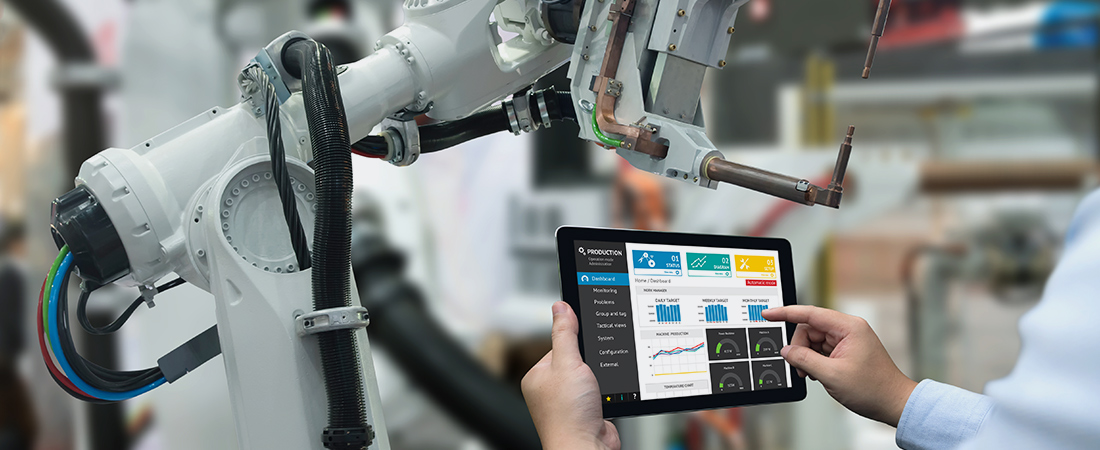The Future of Work: 3 Ways to Prepare Now

Want to learn more about the future of work? Join Sarita Pillai, Joyce Malyn-Smith, and Carrie Parker for a series of upcoming webinars: The Psychology of Working (Feb. 8), Educational Implications of Future Work (Feb. 22), and Policy Implications (Mar. 8).
Imagine a world where a mobile phone app serves as a real-time translator between two people speaking different languages. Or where driverless trucks haul goods along the nation’s highways. Or where teams of engineers and robots use machine learning to design innovative cars and invent new medicines.
Much of this is already happening. But as automation and artificial intelligence push us toward this “human-technology frontier,” how do we prepare for the implications of the changing relationship between humans and the tools they use to work?
For the past year, researchers from EDC and Boston College have interviewed engineers, scientists, and people in the defense industry about these relationships. They have shared their findings in a new report: Building the Foundational Skills Needed for Success in Work at the Human-Technology Frontier.
“We learned that virtually all fields will be affected by emerging changes in automation and artificial intelligence, which has major implications for our educational system,” says EDC’s Sarita Pillai, who coauthored the report with colleagues Joyce Malyn-Smith and Carrie Parker.
The main takeaway? We need to take action now to shape the future workspace and to prepare young people for life at the human-technology frontier. Here are three ways to get started.
1. Invest in K–8 STEM learning
By age 13, children are already making educational decisions that impact potential career paths. This makes elementary and middle school a perfect time to invest in STEM learning programs—especially those that are actively trying to appeal to girls, students with disabilities, and students of color, all of whom are underrepresented in the STEM workplace.
But scaling up STEM programs such as robotics, 3-D printing, and computer science costs money. So does teacher training.
“I think industry is in a unique position where they could lead on this issue,” says Malyn-Smith, an expert on STEM careers and workforce development. “We have to get more companies to collaborate with schools. Innovative STEM programs are the lifeblood of the STEM talent pipeline.”
But educators and researchers also have a big role to play. Malyn-Smith points to the National Science Foundation’s ITEST program as a model of how STEM programs can spark children’s interest in using science, mathematics, engineering, and technology tools to explore the world around them.
“The goal of early STEM learning shouldn’t be to teach students to use various pieces of software, because most of those products will be obsolete by the time students join the workforce,” she says. “Rather, it’s about helping young people develop a comfort with using, modifying, and creating technologies, and developing the dispositions needed for future success that they will carry forward into the workforce. ITEST has done that exceptionally well.”
2. Plan for what could go wrong
For workers with the right set of technical skills, the future of work could be rife with opportunity. But as industries rely more on emerging technologies, the balance between the tasks humans do and the tasks computers do will change. The skills required for certain jobs may change rapidly. Many people may also experience job loss and economic uncertainty—a recipe for social strife.
The nature of some emerging industries may also introduce some new ethical concerns for humans to confront. For example, should we use gene editors to cure genetic disorders in humans? How do we prepare for a society where not everybody needs to work? And how do we prevent discrimination and bias from infecting the artificial intelligence and machine learning systems that we build?
Parker believes that industry and civic leaders need to address some of these issues now while the future of work is still taking shape.
“We don’t have to accept that the human-technology frontier will just happen to us,” says Parker. “We have an obligation to create the new workspace as we want to see it, an opportunity to encourage young people’s participation in that creation, and a responsibility to promote policies that will help us shape that future, even as the nature of work continues to change.”
3. Work together
If you ask industry experts, educators, and researchers to envision what work will look like two decades from now, you are likely to hear many different answers. But there is an emerging consensus that everyone must work together in order to best educate the STEM workers of the future.
“There can’t just be one set of players examining the future of work,” says Pillai. “Creating teams of researchers, educators, and industry professionals will spark the breakthroughs in STEM education that, frankly, we need.”
There are opportunities for more collaboration, adds Pillai, such as the Department of Labor working more closely with the Bureau of Labor Statistics to predict future trends. Industry experts should be at the table, too, she says, because they can see gaps in their employees’ skills and knowledge.
“Everyone is asking, ‘What are the STEM skills that we need to teach now?’ ’’ she says. “I think it’s a question that we can only answer together.”